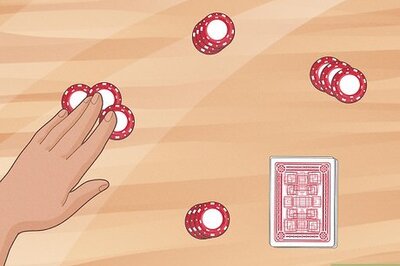
views
NASA has introduced its latest strategy to guard Earth against potentially catastrophic asteroids, drawing inspiration from the event that wiped out the dinosaurs 66 million years ago. The newly revealed National Preparedness Strategy and Action Plan outlines a multi-pronged approach to tackle near-Earth objects (NEOs) that pose a significant threat.
Although no immediate asteroid threats are looming, NASA is taking proactive measures to prepare for worst-case scenarios. One of the key proposals involves deploying an “army” of 1,000 spacecraft to intercept and deflect large asteroids before they reach Earth. In extreme cases, the plan even includes the possibility of using nuclear devices to break apart or redirect these space rocks – a concept like that of the 1998 film Armageddon.
The DART mission
A cornerstone of NASA’s defence plan focuses on using kinetic impactors, spacecraft designed to crash into asteroids and alter their trajectories. In 2022, NASA successfully demonstrated this technique with the Double Asteroid Redirection Test (DART) mission. The mission involved intentionally colliding a spacecraft with a non-threatening asteroid, proving that NASA can change the course of potentially dangerous asteroids.
This milestone reveals that even with the vastness of space, Earth has a viable defence mechanism against incoming threats.
“As we saw with the success of the DART mission, NASA is committed to protecting Earth from potentially hazardous asteroids and comets,” said Administrator Bill Nelson. “Planetary defence benefits all of humanity and NASA’s strategy and action plan outlines how we will continue to protect our home planet over the next decade.”
The nuclear option
In scenarios where an asteroid is detected with little warning, NASA is prepared to use more drastic measures. If a large asteroid were only months away from colliding with Earth, a nuclear explosion might be employed to either deflect or fragment it, thereby reducing the risk of a planet-wide disaster.
NASA’s plans recognise the immense consequences of an asteroid impact similar to the Chicxulub event, which led to the extinction of dinosaurs. Such an impact would cause massive destruction, unleashing intense heat and dust clouds that could block sunlight for extended periods, triggering an “impact winter” and potentially causing mass extinction.
“An asteroid impact with Earth has potential for catastrophic devastation, and it is also the only natural disaster humanity now has sufficient technology to completely prevent,” said Lindley Johnson, NASA’s planetary defence officer. “The release of this NASA strategy steps up NASA’s intentions for the next 10 years to ensure the agency works both nationally and internationally to protect our planet for the benefit of all.”




















Comments
0 comment